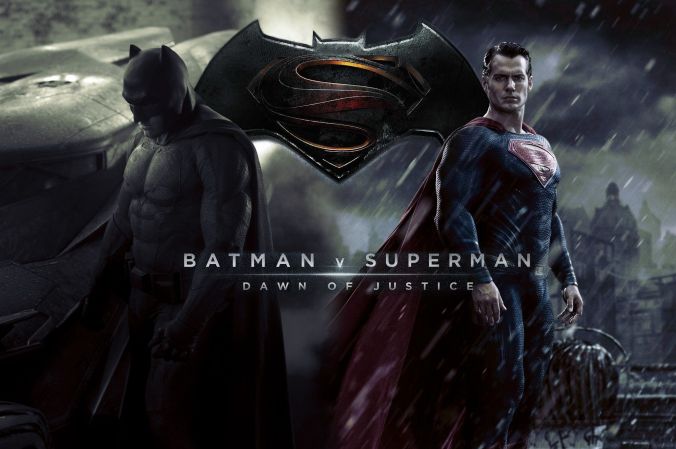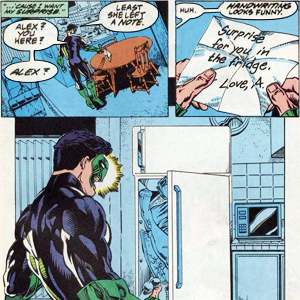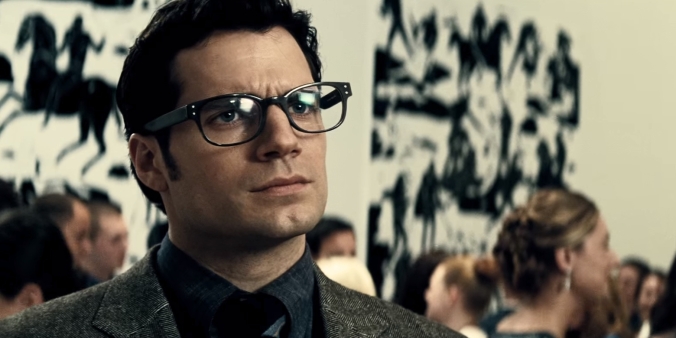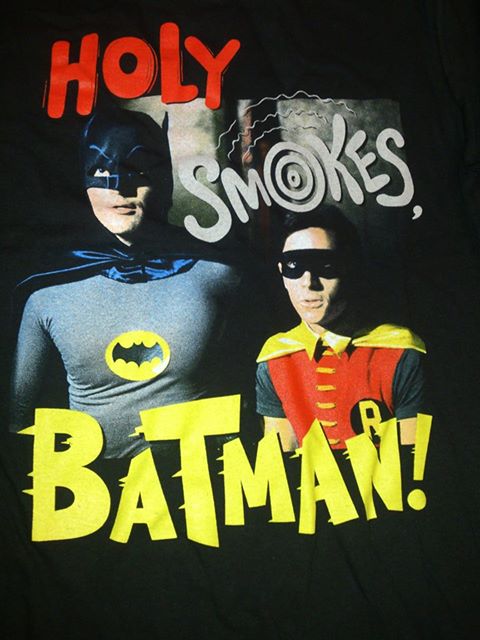#Fe

There has been such a negative reception of this movie Superman vs Batman: Dawn of Justice (DOJ) that it has literally sparked reshoots for other DC franchises for fear that the other movie–Suicide Squad–might be too similar to DOJ and also experience a bad reception.
However, I think that much of this was due to viewers’ preconceptions.
Obviously there is going to be spoilers ahead, so don’t say I didn’t warn you.
- DOJ is the First Post-Millennial Super-Hero movie to NOT be a Comic Opera
For many viewers, it was expected that DOJ would be another action movie for the DC Cinematic Universe (DCCU). We have been shamelessly primed by the powerhouse of the Marvel Cinematic Universe (MCU) for action movies, that when we see DC/Warner Bros. trying something new it caused many to recoil. And what DC was attempting with DOJ was to have a more literary interpretation of the subject; i.e. super heroes.
To give better context, we can compare DCCU and MCU to Science fiction and Space Opera. Now you might be asking yourself what is a Space Opera? Well, one of the most famous and successful franchises ever is a space opera: Star Wars. In contrast a Science fiction movie would be more like “The Martian”.

Note: when I was first throwing this idea around, I was originally mislabeling DOJ as the first Comic Opera, when in fact my research has shown that it actually if the first movie to not be an opera per definition.
According to Wikipedia science fiction can be interpreted as “a genre of fiction dealing with imaginative content such as futuristic settings, futuristic science and technology, space travel, time travel, faster than light travel, parallel universes and extraterrestrial life. It often explores the potential consequences of scientific and other innovations, and has been called a ‘literature of ideas.’”
On the other end of the spectrum, Wikipedia has this to say about Space Operas: “a subgenre of science fiction that often emphasizes romantic, often melodramatic adventure, set mainly or entirely in outer space, usually involving conflict between opponents possessing advanced abilities, weapons, and other technology. The term has no relation to music but is instead a play on the term ‘soap opera’.”
What I find interesting is how well the MCU fits into the description of the space opera—or in this case Comic Opera. Many of the MCU movies fail to deal with the consequences of the existence of super heroes beyond the superficial level experienced by the heroes themselves. If anything is mentioned about the experience of the normal people in the universe, is only done so in brief passing. Most of the movies are spent glamorizing the romantic side of being superhuman: awesome powers/abilities, glorification of violence, and the victory of the righteous over perceived evil.

DOJ on the other hand spends probably near 75% of the movie agonizing over the idea of Superman’s existence, and what ripple effect he has had on the lives of every day citizens. For that matter, Superman questions the validity of his own actions often as well as whether or not his only peer—Batman—is doing more harm than good. In fact, for a movie that is titled for an action sequence, there is very little action because so much time is spent on the ideologies and realities of having to live within that universe. Which brings me to my next point…
- This is Actually not an “Action” Movie—it’s a “Drama” Movie
Yeah, even though it’s titled for a battle sequence this movie concentrates more on the tone of drama than on the subject of action. But let’s take a good look by what is meant by “action” and what is meant by “drama”.
| Drama: | Action: |
| – Serious tone
– Character driven – Emphasis on plot lines – Political/Philosophical issues – Centralized settings |
– Manic tone
– Action driven – Intense fight scenes – Righteous issues – Goal-oriented settings |
Both styles of movie can not only be entertaining on their own, but have been successfully mixed in other movies, however in DOJ there seems to be a clear distinction that the movie is more concerned with dramatic elements than it is with the action elements. Instead of being taken from scene to scene mostly by action, the viewer for DOJ is provoked into thought about the philosophical issues that are raised.

Here are some of the issues that DOJ addresses extensively:
- Can titular super heroes have normal lives? Getting married for instance.
- Can super heroes have relationships with normal people, wherein they each are equal?
- How unrealistic is it to expect privacy as a super hero?
- Is it realistic to expect forces of “good” to get along with each other and agree on everything?
- Does having a hero at your disposal make you more likely to endanger yourself and others?
- Because you can intervene, should you intervene?
- Who are heroes ultimately accountable to?
- Is it psychologically healthy to have the need to be a hero?
Using MCU as the standard for comic book adaptations, it is very clearly seen that titular characters are not allowed to experience married life. The closest we see to a “married” character is Hawkeye, who is not only not a titular character with his own movie, but he also does not seem to spend very much time with his family either. It’s almost as if he only sees his wife briefly between missions to keep her impregnated. And even though Black Widow alludes to a close relationship with his family, Hawkeye literally separates an entire portion of his life and an entire portion of his identity away from them. His family will never actually get to see him, only the superficial portion he chooses to share. All other MCU relationships never make it passed dating, and even if they do the female of the relationship often gets “fridged”.

But in DOJ, not only do we see the titular Superman enjoying a seeming normal and healthy relationship with his live-in girlfriend Lois Lane, but he also is revealed to have been about to propose marriage to her before he was temporarily killed. And in their relationship, they have equal emotional footing with each other, whereas many movies—I’m looking at you all 5 Spiderman movies—if the titular character gets with the girl, she if often an overly-emotional, strife-causing trophy.

All these ideas are hugely philosophical and can been subtly seen being represented by a painting in the background of Clark Kent and Bruce Wayne meeting. This painting is called “A balance of Terror” by Clean Peterson, and the theme of it is that absolute power corrupts. What better example is there of absolute power than the people who gain super human abilities and deem themselves to be the hands of justice in the world without any sort of power-check. This painting literally has too many symbolic elements in each figure for me to get into further without that painting alone absorbing this whole post.
Additionally, it is fair to state that the viewer is also provoked into thought over the issues that are not expressly brought up by the movie.
To get into that, let’s talk about murder.
- Straight-up Murder
Holy Civilian Murder Batman!

No seriously. As we saw in “The Man of Steel”, the predecessor of this film it was alluded to that Superman actually murdered civilians while in effort to stop General Zod. Not only that, the collateral damage he caused was tremendous, and cost the lives of hundreds of people who were not personally involved with Zod and Superman.

But I digress because the real issue is that freaking Batman breaks his cardinal rule in DOJ: no killing. During a chase scene in Gotham, while Batman is chasing Luther’s mercenaries for some of that sweet, sweet kryptonite he totally murders some people without flinching. In this scene he disables an enemy car that is full of people, hooks it with a tow line, and then flips it upside down on a second car full of people in a way that leaves very little room for hopes of survival.
And as far as collateral deaths go, every criminal Batman freaking brands with hot metal is essentially given a death sentence as stated by characters in the film. The only one who seems to have any qualms about that issue is Superman himself, everyone else seems to shrug it off as if the deaths of those imprisoned are of no consequence. In the car-chase alone though, it seems like Batman kills at least a dozen people, this is clearly not the usual Bruce Wayne Batman we are used to, but much more like the deeply troubled Thomas Wayne seen in alternate universes.

Also like the alternate universe Thomas Wayne Batman, this DCCU Bruce Wayne uses guns as Batman. Even the way that Batman is first introduced—fighting crime in an apparent sweatshop—taps into the point of view civilians have of Batman: superstitious fear and bordering on a horror-movie antagonist introduction. Not even the darkest moments of Christopher Nolan’s Batman universe even compares to the first few minutes of suspense of character introduction represented at that sweatshop in Gotham. DCCU clearly thinks he would have more likely have chosen to follow an alternate development similar Thomas Wayne and a different set of ethos.
That’s a HUGE departure from conventional comic movies that the MCU has conditioned viewers to expect. I can’t think of a single MCU movie where a hero purposefully murdered anyone. Even though this isn’t expressly addressed by the movie—as far as Batman’s contributions goes—it has clearly disturbed fans who expect the righteous hero arc wherein the caped crusader keeps their hands clean of killing. This darker, more violent atmosphere could also be why it was rumored that DOJ might seek an R-rating to follow Deadpool’s example.
All-in-all, DOJ has a lot more in common with “the Watchmen” than it does with the previous franchises DC/Warner Bros. has housed. In previous movies, the PG-13 rating meant that Superman and Batman never really killed anyone, despite how dark the tone of the movie got. Yes, they might have simply not acted, thus not preventing a death of an enemy, but the titular characters did not actively murder people—until the DCCU. Alternatively, in “the Watchmen” we see that the heroes are flawed not just ideologically, but ethically as well. In one scene, the Comedian—arguably not only the catalyst for the movie but also the scene-stealer—murders his pregnant former lover, while remaining somehow sympathetic. This theme of a sympathetic murderer is seen to a lesser degree in the DCCU with DOJ. Frankly though I don’t think either of these heroes has a strong enough personality to remain likable as killers.
So was Superman vs Batman: Dawn of Justice actually surreptitiously an innovative and more literary dissection of comics than Marvel Cinematic Universe counterparts that audiences have been fattened on previously? Or do you think DCCU has possibly just taken itself too seriously and taken the fun out of these Comic Operas that audiences have been devouring since the 2008 MCU starter “Ironman”? Were audiences just dismayed at getting a drama when trailers sold them on an action flick that didn’t exist? Let me know your thoughts in the comment section below.